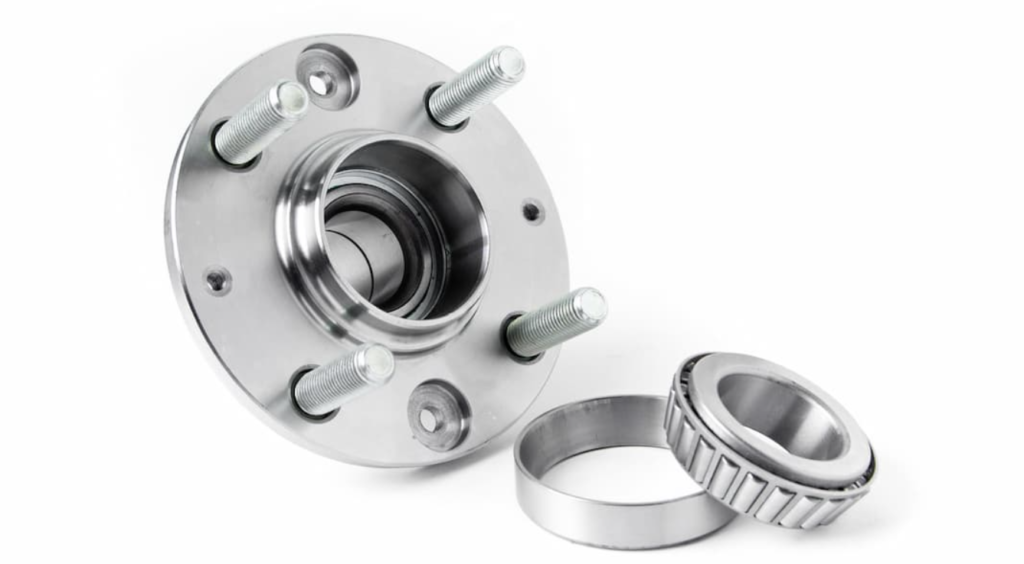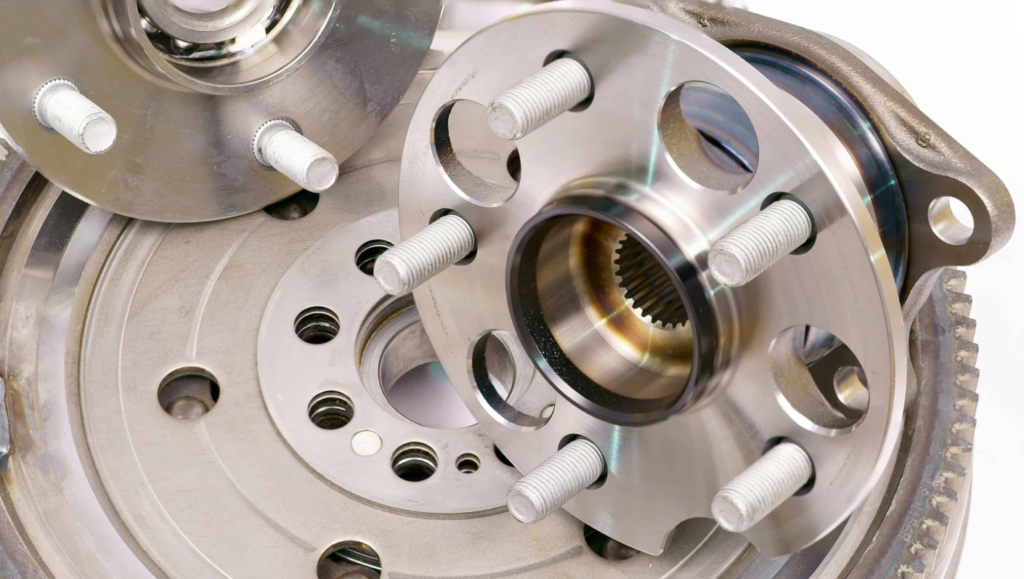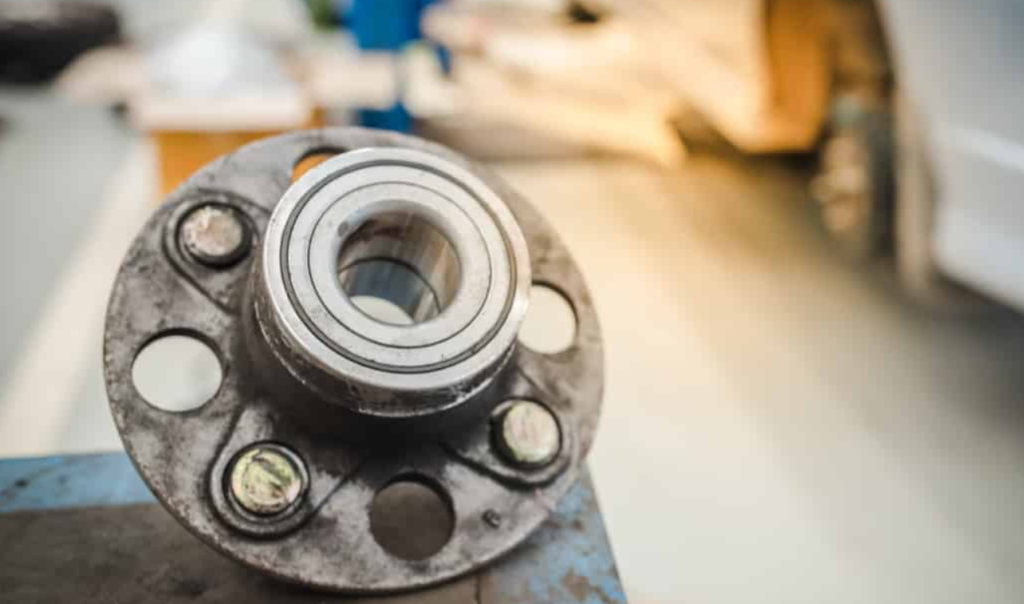Wheel bearings are mechanical components that facilitate the smooth rotation of a vehicle’s wheels. Essentially, they are a set of steel balls or rollers held together by a metal ring, also known as a race.

Importance of Wheel Bearings in Vehicle Function
The importance of wheel bearings can’t be overstated; they reduce friction and bear the vehicle’s weight, allowing for smooth, efficient operation of your car or truck. A malfunction in this critical component can lead to accidents or further mechanical damage.
Scope and Objective of the Article
The main aim of this article is to provide an in-depth understanding of wheel bearings, focusing on their lifespan and signs of wear. You’ll frequently come across the question, how often do wheel bearings go bad? This is essential information for any vehicle owner who wants to ensure a safe and smooth driving experience.
Understanding Wheel Bearings
What Are Wheel Bearings?
Definition and Basic Functionality
Wheel bearings are assemblies of steel balls or tapered rollers held in place by a cage. Their primary function is to reduce rotational friction and support radial and axial loads. In layman’s terms, they help your wheels spin smoothly and steadily.
Role in a Car’s Mechanism
In a car, wheel bearings are crucial for efficient wheel rotation and vehicle stability. They connect the wheel and the axle, allowing for friction-free movement. Their functionality is paramount for vehicle safety and driving comfort.
Types of Wheel Bearings
Ball Bearings
Ball bearings are commonly used because they can handle both radial and axial loads well. They also offer smooth operation at high speeds.
Roller Bearings
Also known as cylindrical roller bearings, these are mainly designed to support radial loads and are often used in heavier vehicles like trucks.
Tapered Roller Bearings
These are primarily used in cars and are ideal for bearing heavy radial and axial loads simultaneously. They are usually installed in pairs facing opposite directions.
How Do Wheel Bearings Work?
The Science Behind Their Function
The wheel bearing operates on the principle of rolling friction. As the wheel spins, the rolling elements—either balls or rollers—move within the race, allowing the wheel to turn with minimal friction. Less friction means less heat, wear, and energy consumption, extending the lifespan of the wheel bearing.
Real-world Example of a Wheel Bearing in Action
Think of a skateboard wheel. When you push the skateboard, the wheels rotate around the axle. This is made incredibly efficient due to the bearings, and the same concept is scaled up in automobiles to support greater loads and speeds.
To ensure your vehicle’s optimal performance and your own safety, understanding how often do wheel bearings go bad can go a long way in helping you maintain the car properly. As we progress through this guide, we’ll dive into that subject matter and much more. Stay tuned for the comprehensive insights you need about wheel bearings.
Average Lifespan of a Wheel Bearing
Statistical Life Expectancy
On average, a wheel bearing should last between 85,000 to 100,000 miles under normal driving conditions. It’s one of those parts that can sometimes outlast the car itself if maintained correctly. However, how often do wheel bearings go bad is a question on the mind of every responsible vehicle owner. It’s important to note that the life expectancy can differ due to various factors that we will delve into shortly.
Factors Affecting Longevity
The lifespan can be affected by several variables, including the quality of the wheel bearing itself, driving habits, and external conditions. Regular maintenance checks can extend the bearing’s life, while neglect can dramatically shorten it.

When is it Time to Replace Wheel Bearings?
Age of Vehicle
Older vehicles may have wheel bearings that are nearing the end of their useful life. If your vehicle is over 10 years old, consider having the wheel bearings inspected.
Mileage Considerations
The 85,000 to 100,000-mile rule is a general guideline. If you reach this milestone, it’s advisable to get your wheel bearings checked.
Driving Conditions
Frequent driving on rough or uneven terrain increases the wear and tear on your wheel bearings. In such cases, the wheel bearings may need replacement sooner than the average lifespan suggests.
Factors Affecting Wheel Bearing Health
Environmental Factors
Road Conditions
Poor road conditions like potholes and gravel can cause premature wear. Driving frequently on such surfaces can shorten the lifespan considerably.
Weather and How it Impacts Wear and Tear
Extreme cold or hot temperatures can affect the lubrication in the bearings, causing them to wear faster.
Mechanical Factors
Alignment Issues
Improper wheel alignment can cause uneven wear on your wheel bearings, affecting their lifespan.
Quality of Surrounding Components
Low-quality tires, rims, or even brake components can indirectly impact the health of your wheel bearings.
Driving Habits
Effects of Aggressive Driving
High-speed driving, sudden stops, and quick starts can hasten wear and tear.
Impact of Carrying Heavy Loads
The heavier the load your vehicle carries, the more pressure is placed on the wheel bearings, affecting their longevity.
Identifying Problematic Wheel Bearings
Signs of a Bad Wheel Bearing
Audible Noises
A common symptom of a bad wheel bearing is a grinding or squealing noise that changes with vehicle speed.
Vibration While Driving
You may feel a noticeable vibration coming from the direction of the affected wheel.
Confirming Your Suspicions
Professional Diagnosis Options
If you suspect that your wheel bearings are bad, the best course of action is to consult a qualified mechanic. They can run diagnostics tests that are more comprehensive.
DIY Diagnosis Tips
Some DIY methods include driving in a safe, empty area where you can swerve (within the law) left and right. If the noise or vibration increases with the change in direction, it could point to a wheel bearing issue.
The question,how often do wheel bearings go bad remains pertinent for maintaining a vehicle. While they generally have a long lifespan, various factors can speed up their degradation. Regular checks and understanding the warning signs can help you replace them before they lead to more severe problems.
Replacing and Maintenance
The Cost of Replacing Wheel Bearings
Labor Cost
The labor cost for replacing a wheel bearing can vary depending on your location and the complexity of the job. However, you can generally expect to pay between $100 to $300 for labor.
Parts Cost
The actual wheel bearing part usually costs between $40 to $200, depending on the make and model of your vehicle.
Wheel Bearing Replacement Procedure
Brief Overview of the Steps Involved
- Lift the vehicle safely using a jack.
- Remove the wheel.
- Remove the brake caliper and rotor.
- Remove the old wheel bearing.
- Install the new wheel bearing.
- Reassemble the rotor and brake caliper.
- Reattach the wheel.
- Lower the vehicle and test drive.
Time Required for the Operation
The replacement procedure usually takes about 2 to 4 hours, depending on experience and tools available.
Preventative Measures
Regular Checks and Inspections
Routine checks during other maintenance tasks, such as oil changes, can help catch issues early on.
Maintenance Tips for Longevity
Using high-quality lubricants and avoiding extreme driving conditions can prolong the lifespan of your wheel bearings. This plays into the overarching question of how often do wheel bearings go bad, as good maintenance can mitigate frequent issues.

Legal and Safety Considerations
What Happens if You Ignore a Bad Wheel Bearing?
Legal Implications
Ignoring a failing wheel bearing can render your vehicle unsafe and could result in legal consequences if an accident occurs due to this negligence.
Safety Risks
A faulty wheel bearing can lead to the wheel locking up or even coming off while driving, leading to catastrophic consequences.
Are Wheel Bearings Covered Under Warranty?
Manufacturer’s Warranty
New cars often have warranties that cover wheel bearings, typically up to 3 years or 36,000 miles, whichever comes first.
Extended Warranty Options
Some extended warranties will cover the wheel bearing, but this varies between providers.
Summary
To summarize, understanding the lifespan, warning signs, and maintenance requirements of wheel bearings is crucial for vehicle safety and longevity. The question, how often do wheel bearings go bad is complicated but manageable through regular check-ups and preventative maintenance.
FAQs
How can I check the wheel bearings myself?
Lifting the car using a jack and then spinning the wheel can help identify any roughness or unusual noise that may indicate a failing bearing.
Is it safe to drive with a bad wheel bearing?
No, it is not safe. A bad wheel bearing can lead to severe accidents, including wheel detachment.
How long does it take to replace a wheel bearing?
Usually 2 to 4 hours, depending on experience and tools.
Can I replace wheel bearings on my own?
If you are mechanically inclined and have the necessary tools, you could attempt this repair at home. However, if you’re not confident, it’s best to seek professional help.
Are wheel bearings different for different types of vehicles?
Yes, wheel bearings can vary in design and size depending on the make and model of the vehicle.
By addressing these various aspects, from costs to legal implications, this article aims to provide a comprehensive guide for any vehicle owner who has ever pondered, how often do wheel bearings go bad. The key takeaway is to never ignore the warning signs and to consult professionals when in doubt.